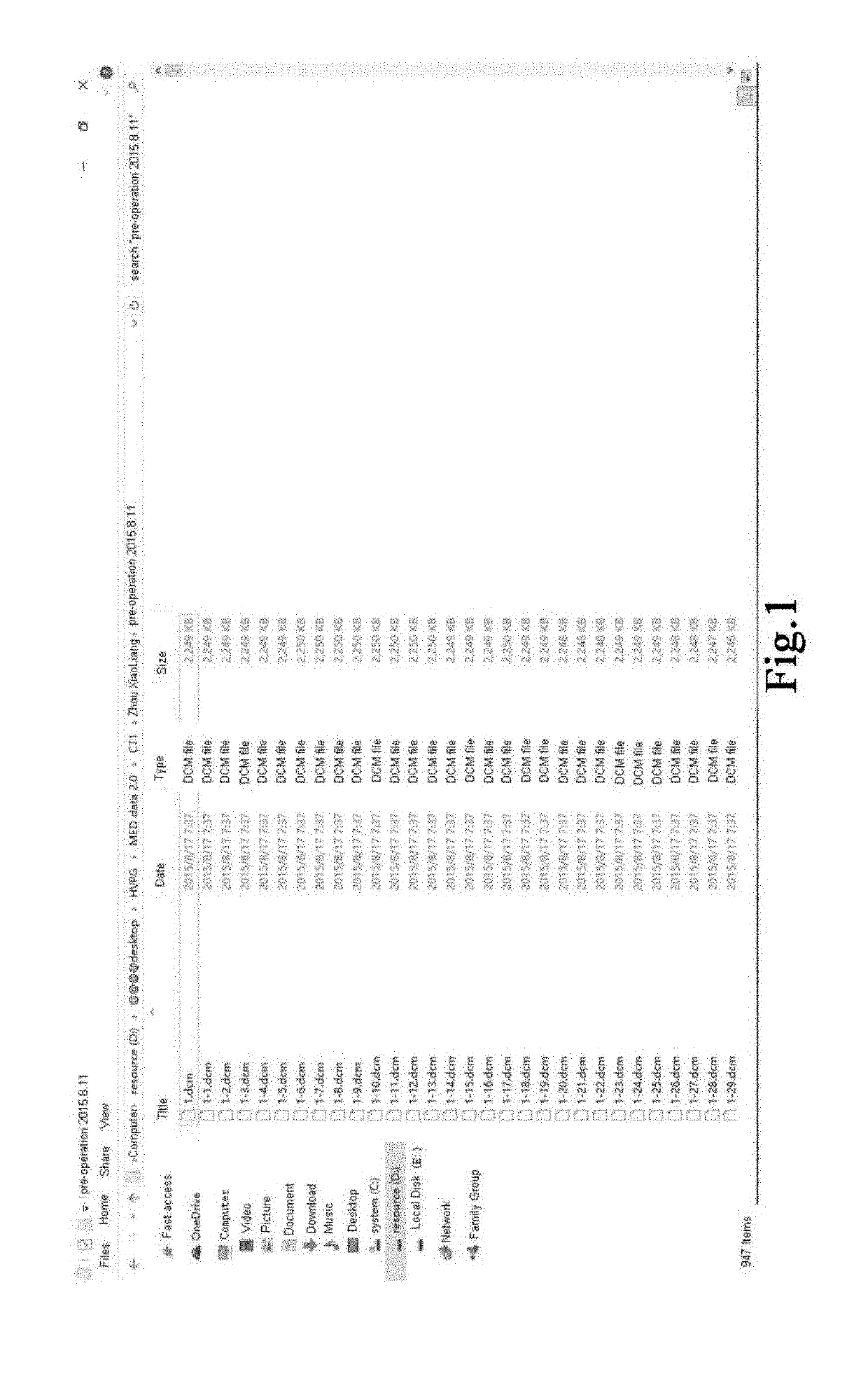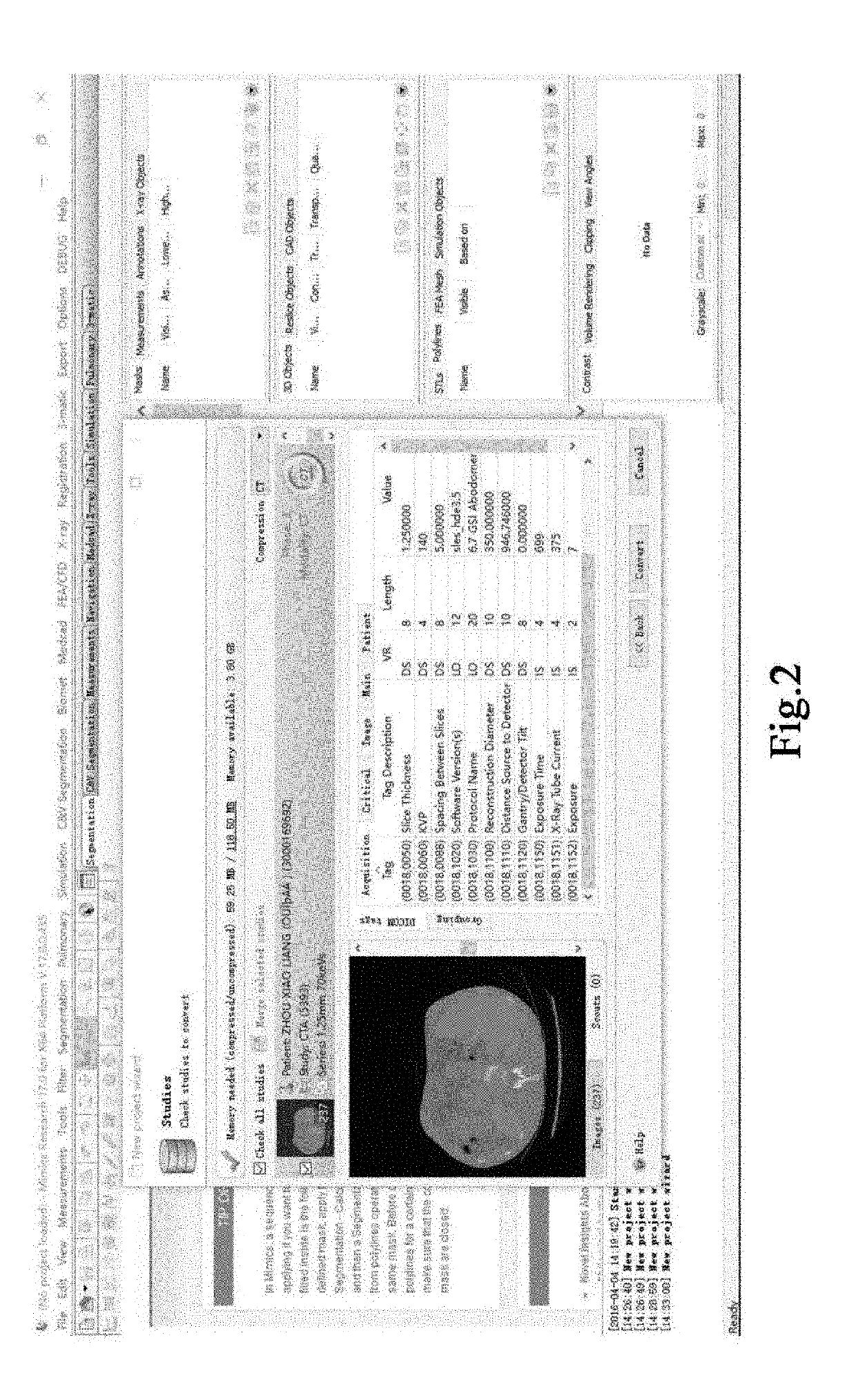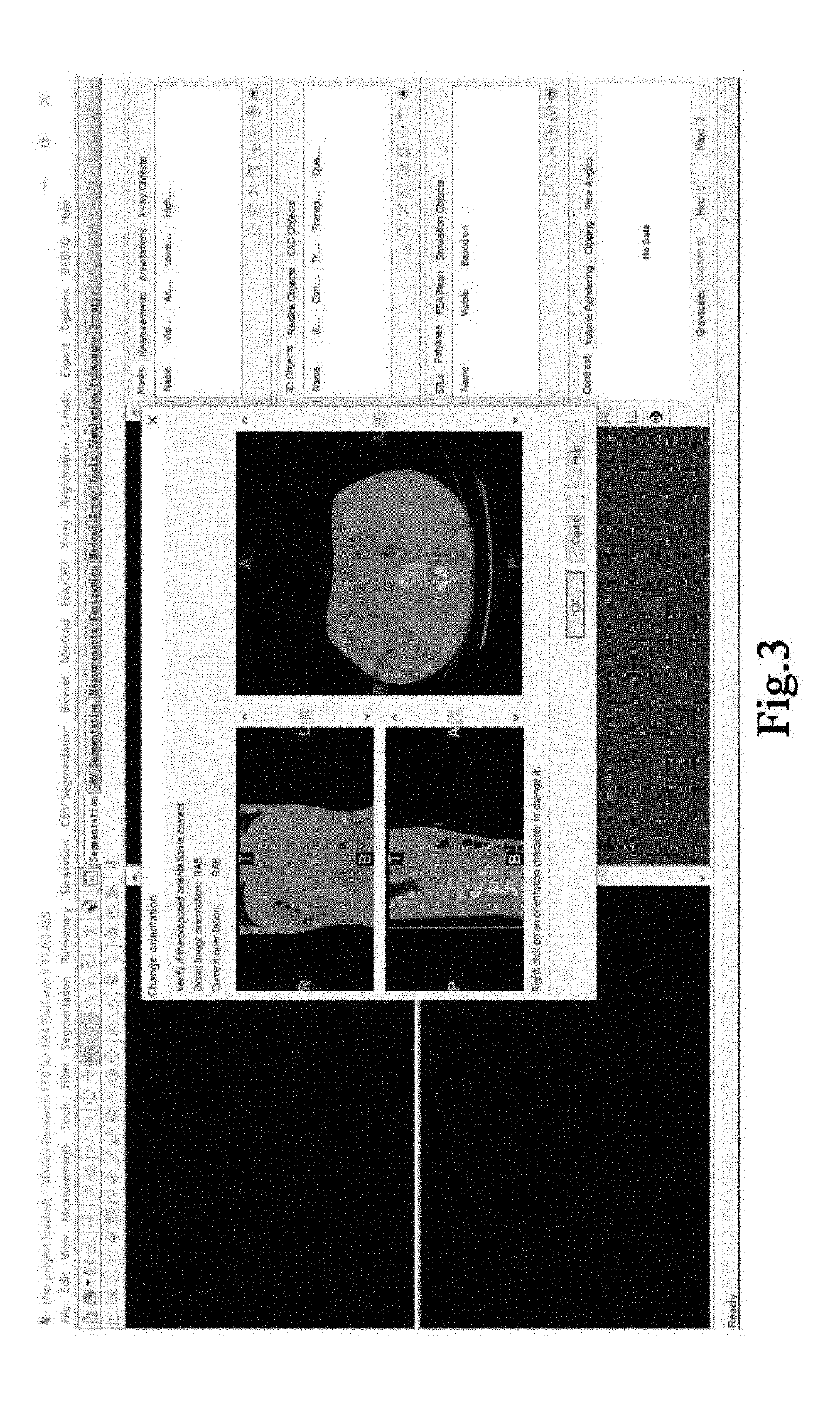Method of Determining Virtual Hepatic Venous Pressure Gradient
a technology of hepatic veins and gradients, applied in the field of early noninvasive diagnosis, can solve the problems of portal hypertension, serious social public health problems, and increased burden of diseases all over the world
- Summary
- Abstract
- Description
- Claims
- Application Information
AI Technical Summary
Benefits of technology
Problems solved by technology
Method used
Image
Examples
Embodiment Construction
[0065]Below, the present disclosure is described in detail with reference to the drawings.
[0066]The method for determining virtual hepatic venous pressure gradient (vHVPG) according to the present disclosure comprises: constructing a 3D hepatic vein-portal vein model; establishing a finite element meshing mathematical model; and obtaining a vHVPG via fluid dynamics simulation calculation.
[0067]1. A contrast agent is injected through the median cubital vein of a specimen, CT angiography (CTA) is performed to acquire CTA slice sequence including hepatic venous phase, and the slice sequence is exported, with the format of dicom, a slice thickness of 1.25 mm and an image resolution of 512×512 pixels, as shown in FIG. 1.
[0068]2. The acquired CTA slice sequence is imported into the medical image control software MIMICS, the hepatic venous phase slice sequence is selected (as shown in FIG. 2), the orientation of the image sequence is set (as shown in FIG. 3), and the MIMICS software automa...
PUM
 Login to View More
Login to View More Abstract
Description
Claims
Application Information
 Login to View More
Login to View More - R&D
- Intellectual Property
- Life Sciences
- Materials
- Tech Scout
- Unparalleled Data Quality
- Higher Quality Content
- 60% Fewer Hallucinations
Browse by: Latest US Patents, China's latest patents, Technical Efficacy Thesaurus, Application Domain, Technology Topic, Popular Technical Reports.
© 2025 PatSnap. All rights reserved.Legal|Privacy policy|Modern Slavery Act Transparency Statement|Sitemap|About US| Contact US: help@patsnap.com



